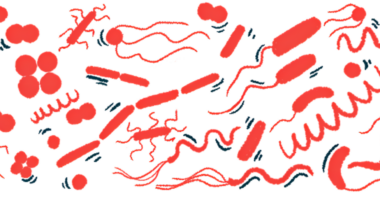ADHD Therapy May Aid Cognition, Impulse Control in Parkinson’s

A medicine approved to treat attention deficit hyperactivity disorder (ADHD), called atomoxetine, could help to improve thinking and impulse control in certain people with Parkinson’s disease, a small study suggests.
Patients with the greatest loss of integrity in a part of the brainstem called locus coeruleus, evident on a brain scan, showed most benefit, its researchers said, suggesting the medication be further tested in larger and longer trials targeting patients with impulsivity.
The study “Locus coeruleus integrity and the effect of atomoxetine on response inhibition in Parkinson’s disease” was published in the journal Brain.
Parkinson’s is characterized by the loss of nerve cells (neurons) that release the neurotransmitter dopamine, a chemical messenger that allows nerve cells to communicate and, among other functions, helps control movement.
Treatment with levodopa, or L-DOPA — a precursor to dopamine — has long been one of the gold standards for Parkinson’s to help patients regain in some extent the control of their muscles.
However, non-motor symptoms can also be common. Dopaminergic therapies often fail to halt cognitive deficits, and in some cases can exacerbate them.
“There has been so much progress treating the motor symptoms of Parkinson’s, but we have not seen the same gains in treating some of the hidden symptoms of Parkinson’s, like cognitive decline and impulsiveness. We know that this can be a challenging problem for people with Parkinson’s, and their families,” Claire O’Callaghan, a neuroscience research fellow at the University of Cambridge and the study’s co-lead author, said in a press release.
Previous research has shown that an imbalance of another neurotransmitter — called noradrenaline — can trigger changes in thinking and processing of actions.
Noradrenaline plays a role in processing thoughts and behavior, and the brain’s main source of noradrenaline — the locus coeruleus region — is one of the first sites to accumulate alpha-synuclein, the protein that forms toxic clumps and is a hallmark of Parkinson’s.
An imbalance of noradrenaline in a patient’s brain leads to deficits of what is known as response inhibition, a form of control that allows a person to stop an action in response to stimuli and certain behaviors.
“[D]opamine is not the only brain chemical altered in Parkinson’s and by looking at others, researchers can potentially unlock other treatments to manage or treat different symptoms of the condition, such as cognition,” said Katherine Fletcher, PhD, research communications manager at Parkinson’s UK, which funded the study.
“People with Parkinson’s have identified this area as being a top priority for research because current treatments are simply not good enough,” she added.
Marketed as Strattera, among others brand names, atomoxetine is approved for the treatment of ADHD. People with ADHD seem restless, have difficulties in concentrating, and may act on impulse.
Atomoxetine works by boosting and rebalancing noradrenaline levels in the brain. As a result, the therapy eases hyperactivity and impulsive behaviors, and increases attention and concentration span.
Previous studies have suggested that atomoxetine could help treat impulsiveness and cognitive decline in Parkinson’s patients. However, their response to their treatment varied greatly.
To predict which patients would benefit from atomoxetine treatment, researchers at the University of Cambridge conducted a small trial in 19 people with idiopathic (of unknown cause) Parkinson’s disease (mean age 67; 15 women).
Participants were tested across three sessions. Following a first session of MRIs and clinical evaluation, they were randomly assigned to 40 milligrams (mg) of oral atomoxetine or a placebo. The study had a cross-over design, meaning placebo-group patients later moved to atomoxetine and vice-versa.
Blood levels of atomoxetine were measured within two hours after each dosing.
To assess atomoxetine’s effects on response inhibition, participants were given a task that involved pressing buttons signaling movement on a keyboard. Occasionally, they would see a ‘stop’ signal, at which they should not press a button. The stop signals were carefully timed to assess if patients responded and how quickly; trial runs were also given to make sure patients understood the test.
Called a stop-signal task, it is used to measure impulse control and, as a result, how the brain processes an input and transforms it into action.
A group of 26 healthy participants (mean age 65; 15 women) served as controls. They underwent MRI scanning and completed the same stop-signal tasks as the patients.
Both patients and controls were also evaluated using a type of brain scan of the locus coeruleus, called neuromelanin-sensitive MT imaging, which allows a detailed imaging of this brain region.
Results showed that atomoxetine improved patient’s ability to stop impulsive behavior, as evident in quicker reaction times. Patients on placebo had longer reaction times compared with controls.
Improvements, however, were dependent on the integrity of the locus coeruleus, and those with more severe degeneration responding the best.
“Our result suggests that a single 40 mg atomoxetine dose confers the most benefit on individuals with a severe loss of noradrenergic capacity,” the researchers wrote. “In this way, noradrenergic replacement in patients with a compromised system may achieve restoration closer to normal levels and improve behaviour.”
Trial results also suggest that imaging of the locus coeruleus represents a promising way of identifying those Parkinson’s patients more likely to respond to atomoxetine.
“This is an exciting step towards individualised therapy for cognitive decline in Parkinson’s as we are now able to identify who this treatment might be suitable for. The next steps will be to carry out a clinical trial with people taking the drug for longer, and to see if it helps cognition on an everyday basis,” O’Callaghan said.
“By looking at what other chemicals are affected, such as noradrenaline, we are taking a step closer to finding better treatments for Parkinson’s,” Fletcher added.







